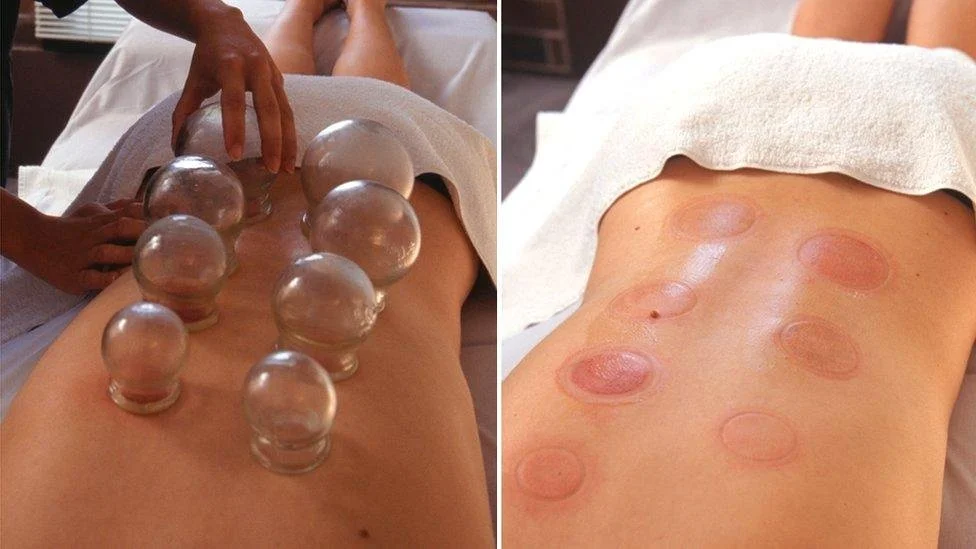Understanding Cupping Marks
Cupping marks are a visual cue of detoxification and improved circulation, not tissue damage.
Cupping therapy is a powerful treatment that has been used for centuries to support the body’s natural healing processes. One of the most common questions clients ask is about the circular marks left behind after a session. While these marks may look alarming at first, they are not bruises — and they actually tell a story about how your body is responding to therapy.
Cupping vs. Bruising: What’s the Difference?
Many people assume that the red or purple marks from cupping are bruises. In reality, bruises occur when capillaries beneath the skin rupture due to trauma, such as a bump or impact. This causes blood and inflammatory fluids to pool under the skin, creating a swollen, painful, blue-black mark.
Cupping works differently. The suction gently lifts the skin and underlying tissue, pulling stagnant fluids and metabolic waste toward the surface. The resulting discoloration is not caused by injury, but by a temporary concentration of old, non-circulating blood and fluid that your body can now more easily process and remove.
In other words, cupping marks are a visual cue of detoxification and improved circulation, not tissue damage.
Cupping promotes circulation and lymphatic flow in the body. When suction is applied:
Blood flow to the area increases
Stagnant blood and interstitial fluids are drawn toward the skin’s surface
The lymphatic system can more effectively clear metabolic waste
Connective tissue is gently stretched and decompressed
Studies suggest that cupping may improve microcirculation and reduce localised muscle tension. For example:
A 2015 systematic review in PLoS One found that cupping can increase local blood flow and reduce pain in musculoskeletal conditions (Farhadi et al., 2015).
Research published in Evidence-Based Complementary and Alternative Medicine (2010) indicated that cupping stimulates immune function and enhances lymphatic drainage (Kim et al., 2010).
What the Marks Tell You
The intensity of cupping marks varies between individuals, depending on factors such as:
Tissue density and circulation
Amount of stagnation or tension in the area
Suction strength and duration of the treatment
With consistent treatment, marks often appear lighter over time. This is a sign that the soft tissue has been replenished with fresh blood and oxygen, and that old stagnant fluid is gradually being cleared away.
What your cupping marks tell you
How to Care for Cupping Marks
Cupping marks are generally harmless and fade within 3–10 days. To support your body after a session:
Stay hydrated to help flush toxins through your lymphatic system
Avoid strenuous exercise or extreme heat immediately after treatment
Apply gentle warmth or a nourishing oil to the area if desired
Remember, these marks are a positive sign that your body is responding to treatment and beginning its natural healing process.
Bottom Line
Cupping is a safe, effective therapy that promotes detoxification, circulation, and tissue health. The marks left behind are natural signals of the body’s response, not bruises or injury. With consistent care and cupping treatments, these marks will lighten, tissues are revitalised, and overall wellbeing is enhanced.



